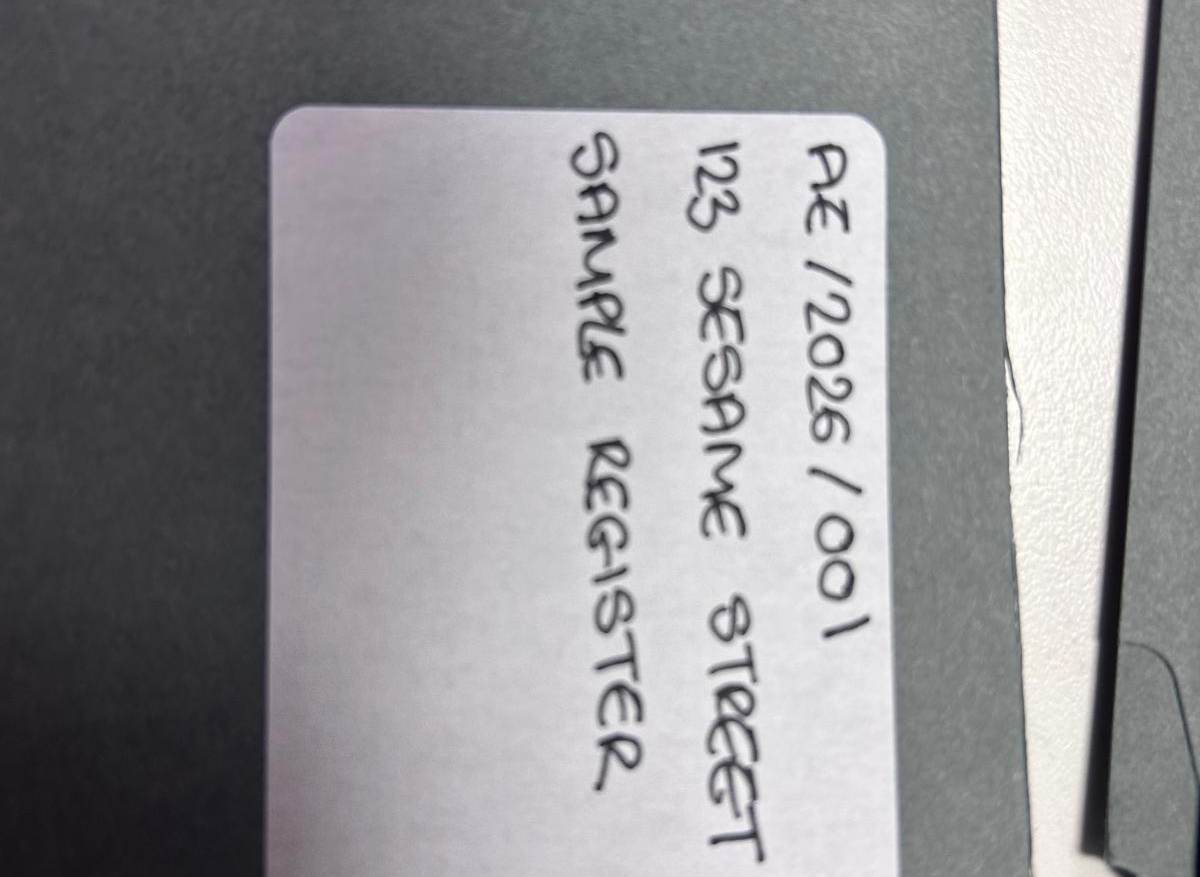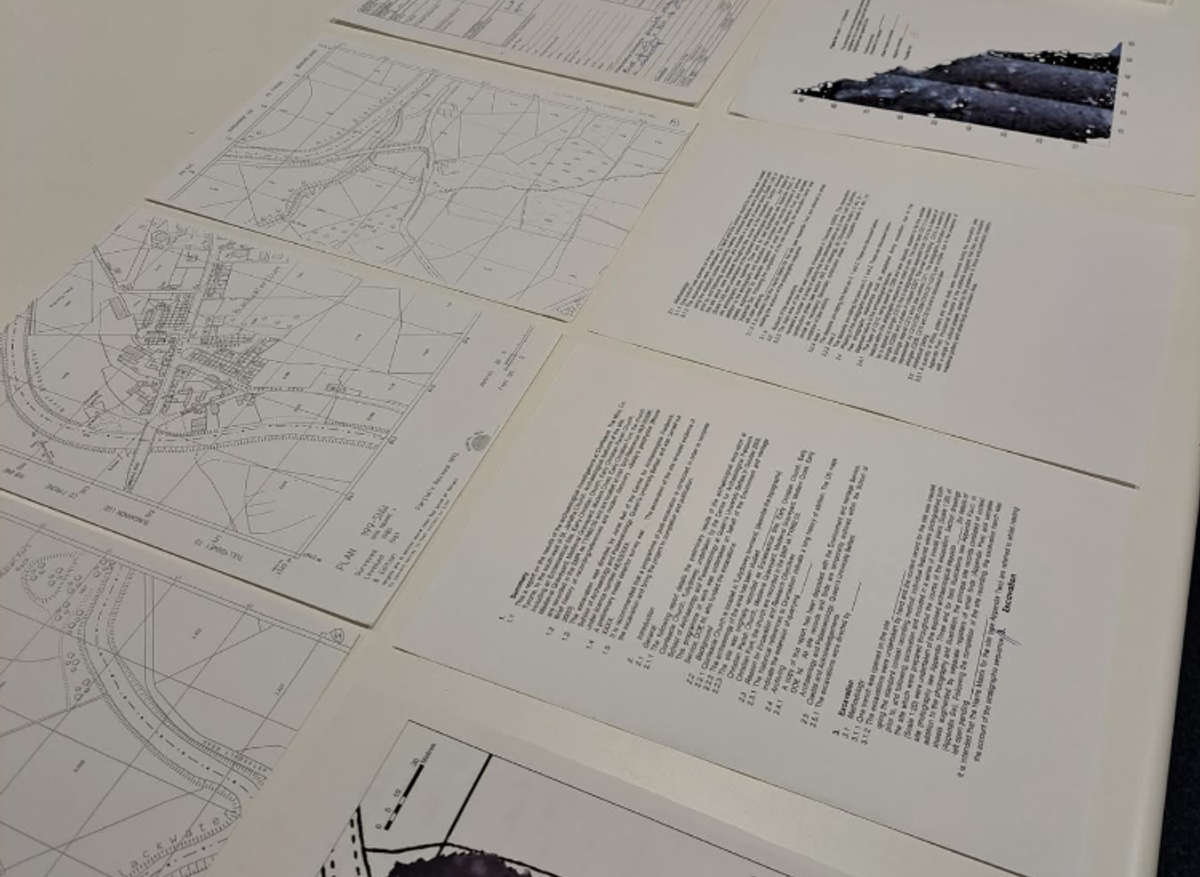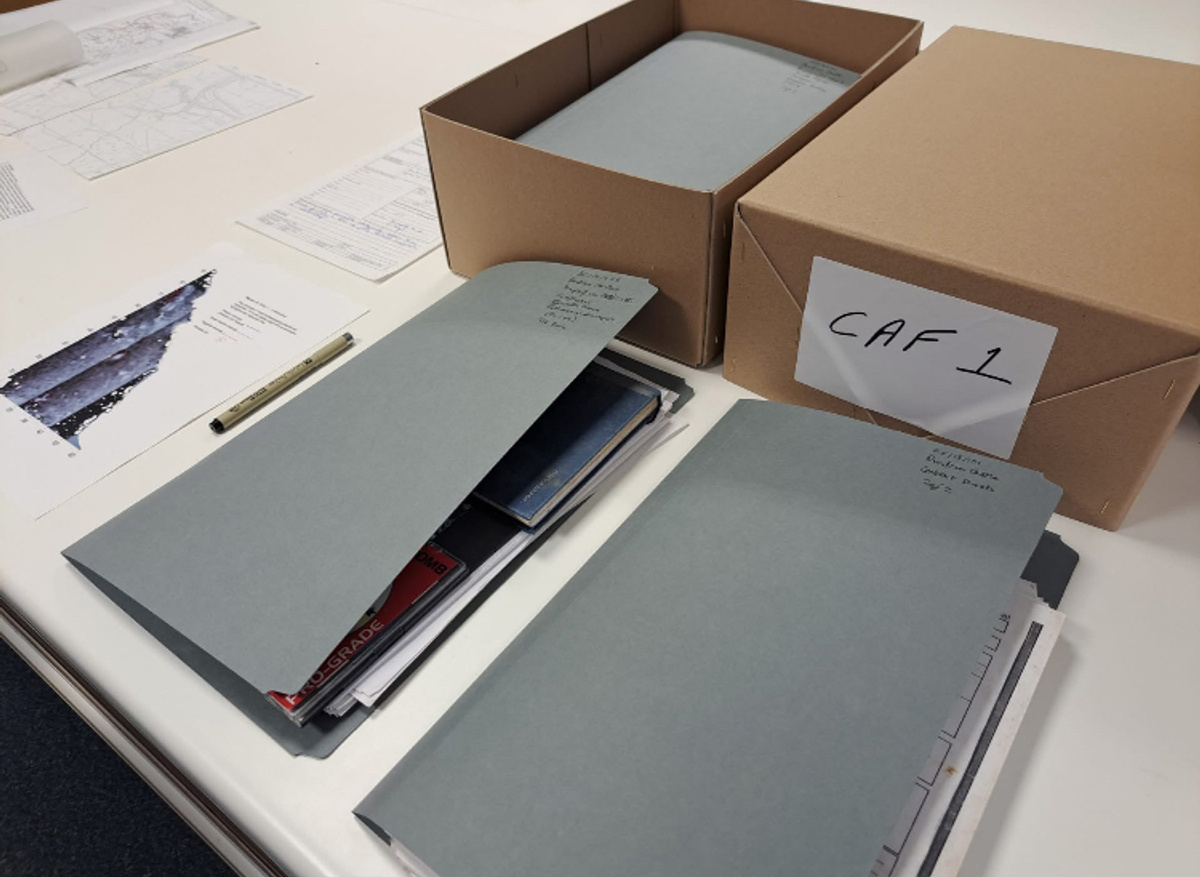A day in archaeology - Archiving excavation records
My Name is Jamie, and I am a placement student with the Centre for Community Archaeology, (CCA) in Queens University Belfast.
Currently the Historic Environment Division (the government department in charge of regulating archaeology in Northern Ireland) is collecting the paper archive of sites excavated by the CAF – Centre for Archaeological Fieldwork, (the predecessor of the CCA) for the Department of the Environment between 2002 - 2015 from our office in Queen’s. However, before they can do this, we have to go through the archive and remove from it a variety of unneeded material and prepare it to be sent off.
Why do we remove things from an archive? Isn’t the point to keep everything?
It is important to take material we do not need out of the archive as if we don’t then it just sits there taking up space that could be used for other things.
What sort of material is not needed and why?
Printouts of emails etc. and things that may have personal information on them. We don’t keep that material because we must protect people's personal data. Many email correspondences are about things that lead up to the site being dug and are therefore not important. What the Historic Environment Division is interested in is information that comes from the site itself.
So, what do you need to keep?
We need to keep anything to do with the excavations and post-excavation work. This includes things like site diaries (which are the day to day record of what happened on site), context sheets which record the archaeological strata, layers, and features on a site, soil sample registers and soil sample processing sheets - which record the samples taken from the soil at site that will receive more analysis and radiocarbon certificates which are the record from a radiocarbon date – a special type of date that is ascertained from organic material. Things like these are needed in the archive we send to the HED as there are often no other digital copies elsewhere.
Fig. 1 Examples of archive material
How do you prepare the archive for storage?
We first take the item we want to keep and we place it in a folio file and write on the file, the site name, the site code and what it contains. Finally, we place it into a cardboard box for storage. We then write up on an Excel spreadsheet the contents of each box. We try to arrange each box by county and keep a particularly large archive in its own box. For Drawings the process is different. We roll up the drawings and tie them up with a tape. On the tape we write the site name and the site code. Finally, the drawings go into a box to be stored. The box is given a number and the contents are recorded on the spreadsheet.
Fig. 2 Examples of labelled folio files
Fig. 3 The boxes we use to store our archive in
This leads to 3 of us placement students, taking a dip in the metaphorical ocean of paper archival material that exists in the Centre for community archaeology office - and elsewhere in the archaeology department! In order to archive and catalogue the material.
A typical day for us when doing archiving is usually fairly straightforward, especially since most of our job is to simply remove what’s not needed and to keep what is. We keep what we need and file it away using the method outlined above.
Initially, we started off on the archiving working alone, on one archive at a time. However, we eventually ended up working on them as a group. This helped us to communicate better and allowed us to do our work more efficiently.
It's good as a student to be able to have this opportunity to engage in archive work. This will undoubtably be good practice for wherever any one of us ends up in the future.
I hope that everyone enjoyed reading this blog entry!



